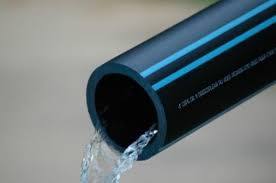Dec . 15, 2024 17:38 Back to list
High-Density Polyethylene Irrigation Pipe Fittings for Efficient Water Management Solutions
Understanding HDPE Irrigation Pipe Fittings A Comprehensive Guide
Irrigation is an essential aspect of agriculture, ensuring that crops receive the necessary water for optimal growth. With the ever-increasing demand for efficient water management systems, High-Density Polyethylene (HDPE) pipes and fittings have emerged as a premier solution for irrigation applications. This article provides an insight into HDPE irrigation pipe fittings, discussing their benefits, applications, and installation considerations.
What are HDPE Irrigation Pipe Fittings?
HDPE fittings are specialized components designed to connect, terminate, or change the direction of HDPE pipes in irrigation systems. Manufactured from high-density polyethylene, these fittings are known for their robustness, flexibility, and resistance to environmental stressors. Common types of HDPE fittings include couplings, elbows, tees, reducers, and flanges, each serving unique functions in an irrigation setup.
Benefits of HDPE Pipe Fittings
1. Durability One of the most significant advantages of HDPE fittings is their durability. They are resistant to corrosion, chemicals, and ultraviolet (UV) radiation, which makes them suitable for various environmental conditions. This longevity contributes to lower maintenance costs over time.
2. Flexibility HDPE is a flexible material, allowing for easier installation, especially in challenging terrains. This property minimizes the risk of breakage during installation and makes it easier to accommodate the changes in landscape.
3. Leak-Free Joints The welding process used to join HDPE pipes and fittings creates strong, leak-free joints. This is particularly important in irrigation systems, where water loss can significantly affect efficiency and crop yields.
4. Lightweight Compared to traditional materials such as PVC or metal, HDPE fittings are lightweight, making transportation and installation less labor-intensive.
5. Environmentally Friendly HDPE is a recyclable material, which contributes to sustainability. Using HDPE in irrigation can reduce plastic waste, leveraging a material that can be repurposed at the end of its lifecycle.
Applications of HDPE Irrigation Pipe Fittings
hdpe irrigation pipe fittings product

HDPE irrigation pipe fittings are widely utilized in various agricultural applications, including
- Agricultural Irrigation Systems They are essential in both drip and sprinkler irrigation systems, offering reliable connections that can withstand high pressures. - Landscape Irrigation For residential and commercial landscapes, HDPE fittings provide effective water management solutions that help maintain the health and aesthetics of green spaces. - Water Delivery Systems Various industries use HDPE pipe fittings to distribute water efficiently, making them applicable in municipal water projects and industrial uses.
Installation Considerations
While the installation of HDPE fittings is relatively straightforward, it is essential to consider several factors to ensure a successful setup
- Proper Tools and Equipment Using the correct tools for cutting and welding HDPE is crucial. Specialized equipment like electrofusion welders or butt fusion machines may be required for joining fittings.
- System Design A well-thought-out design tailored to the specific irrigation needs will optimize water distribution and minimize wastage.
- Soil Conditions Consideration of soil types and the landscape can dictate the type and grade of HDPE fittings needed, ensuring a durable installation that performs well over time.
- Pressure Ratings Knowing the pressure ratings of both the pipes and fittings is critical to prevent leaks and failures during operation.
Conclusion
In conclusion, HDPE irrigation pipe fittings play a vital role in modern irrigation systems. Their durability, flexibility, and environmentally friendly characteristics make them an ideal choice for farmers and landscapers looking to enhance their water management practices. By understanding the various types and applications of HDPE fittings, users can make informed decisions that will lead to improved irrigation efficiency and crop productivity. Investing in high-quality HDPE fittings is not just a choice for today but a commitment to sustainable agricultural practices for the future.
-
High-Quality PVC Borehole Pipes Durable & Versatile Pipe Solutions
NewsJul.08,2025
-
High-Quality PVC Perforated Pipes for Efficient Drainage Leading Manufacturers & Factories
NewsJul.08,2025
-
High-Quality PVC Borehole Pipes Durable Pipe Solutions by Leading Manufacturer
NewsJul.08,2025
-
High-Quality PVC Borehole Pipes Reliable PVC Pipe Manufacturer Solutions
NewsJul.07,2025
-
High-Quality UPVC Drain Pipes Durable HDPE & Drain Pipe Solutions
NewsJul.07,2025
-
High-Quality Conduit Pipes & HDPE Conduit Fittings Manufacturer Reliable Factory Supply
NewsJul.06,2025

